TOMSK, Mar 26 – RIA Tomsk, Vadim
Belozertsev. Tomsk
journalists were the first who visited new tourist route "The Golden Ring
of the Tomsk region". Material of RIA Tomsk is about route sights.
Earlier it was reported that the
weekend tourist route "Window to Siberia. The Golden Ring of the Tomsk
region" assumes a travel across Tomsk and eight areas of the region –
Shegarsky, Krivosheinsky, Molchanovsky, Kolpashevsky, Kargasoksky, Parabelsky,
Chainsky and Tomsk. Route extent is about 1,3 thousand kilometers.
According to organizers – regional
office of Russian Geographical Society, inhabitants and guests of the region
will be able to go to a travel across "The Golden Ring of the Tomsk
region" in the summer of 2017.
Sacred images and Tomsk rhinoceroses
The excursion across the Tomsk
region begins at 8:00. By this time, the minibus Mercedes for 20 places have
been expecting for our experimental group of tourists in the Lagernyy garden.
The first stop outside Tomsk is
Shegarsky museum of local lore.
At the door representatives of fauna
of the area, and not only modern, but also prehistoric inhabitants of the local
woods and fields meet tourists. There is a collection of remains of mammoths,
bisons, rhinoceroses and even cave lions in the museum.
© Евгений Кожевников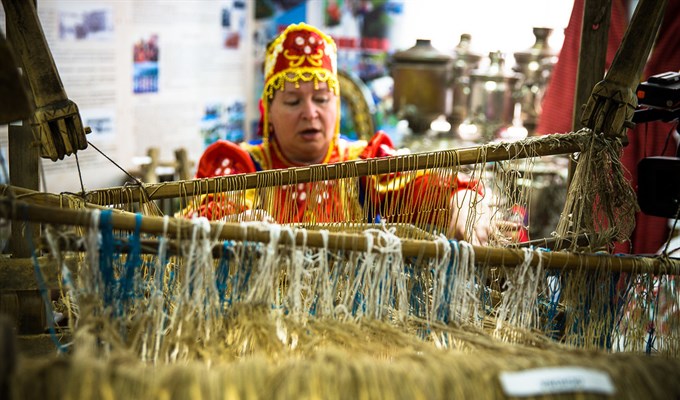
Shegarsky museum of local lore
There is also an exposition devoted
to life of the first settlers where home weaving looms, distaffs, samovars and
even the first Russian sharpener for the razor are exposed. Besides, tourists
can see also richly decorated Blessed Virgin Mary's icon of 1703.
"This icon was so worshiped
before the revolution that annually a religious procession were held with it.
People went to Petropavlovsk – to present Kazakhstan. <…> It has a name
Hodegetria, in fact, it is God's blessing on the forthcoming way", – the
prior of the local temple, the priest Alexey told journalists.
Journalists were fed with a tasty
and fast breakfast: potato with cheese and mushrooms, berries pies and very
tasty and sweet candies from carrot.
The following significant point of a
route is St. Nicholas Convent in Mogochino.
© Евгений Кожевников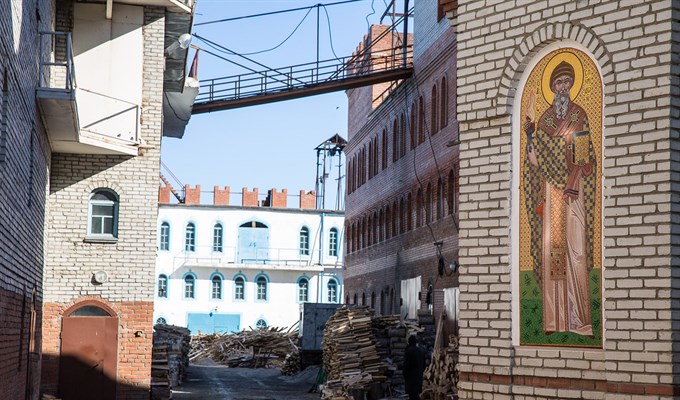
Yard of the monastery in Mogochino
It is possible to call this monastery,
similar to fortress, "Tomsk Vatican" – it is located in the territory
of the village, but it lives its own life. Everything is like in Middle Ages -
powerful walls go into the sky, priests grandly walk (the whole lines of
persons interested to kiss a hand queue up to some of them), flocks of dirty
children run, women in black scarfs select building materials for the
forthcoming building.
© Евгений Кожевников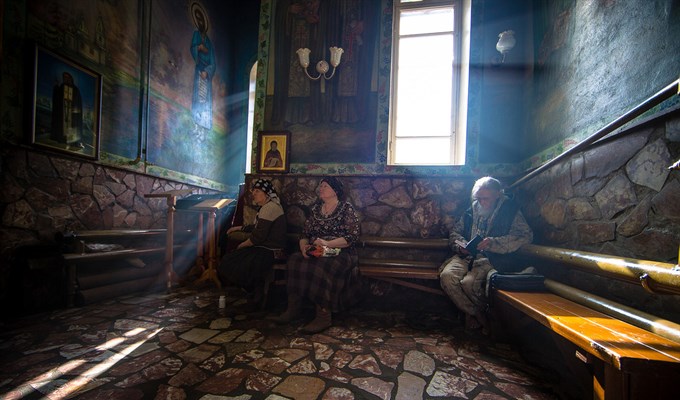
Monastery in Mogochino
"Three thousand people live in
the settlement (in Mogochino), 900 (people) live somewhere at the monastery.
Pilgrims come constantly – 60 people a week. They come from all country.
<…> Sunday services bring together up to 500 people, and for big holidays
as for Christmas, – to 900 (people)", – the archdeacon Matfey told.
There are also the hotel for 120
places, school, and the refectory in the monastery, which isn't of a lower
quality dishes of cafe. However, everyone will be able to get acquainted with
local cuisine since the summer – tourists have a lunch here according to the
plan.
© Евгений Кожевников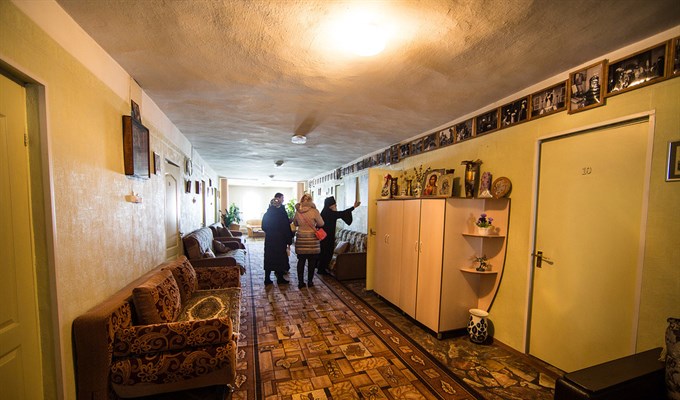
Monastery Hotel in Mogochino
The route of the first day comes to
the end in the geographical center of the Tomsk region – Kolpashevsky district,
one of the main sights of which is stone Church of the Ascension in the village
of Togur. It will celebrate the 200th anniversary next year, at the same time
everything – from overlappings to icons – remained perfectly.
© Евгений Кожевников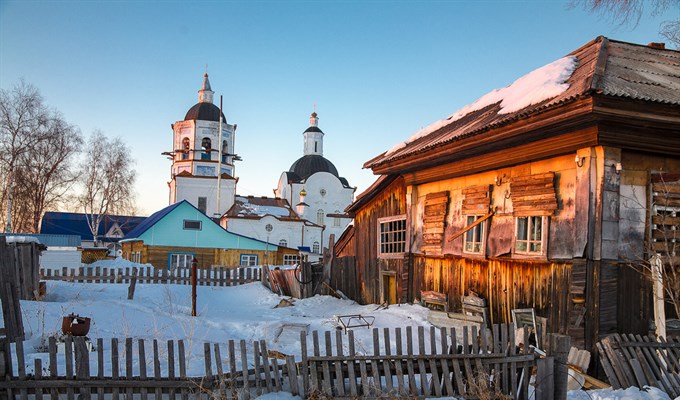
Togur Church
"God didn't leave this
place", – one of participants of the group whispered.
In the footsteps of Stalin
The second day began also at 8:00:
organizers are forced to hurry tourists as the road takes a lot of time.
This day organizers suggest to visit
the village Narym of Parabelsky district. First of all this settlement is known
as the place of the exile: both Decembrists, and participants of the Polish
revolt were banished to Narym, but Joseph Stalin was the most famous exiled.
Thanks to this circumstance, the museum was founded in the late forties in
Narym.
© Евгений Кожевников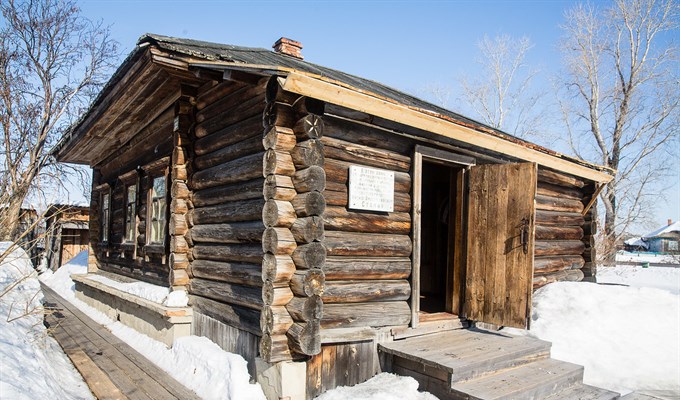
House of the Alekseev family in Narym
Now the Narymsky museum of political
exile is located in the house of the Alekseev family where future "Father
of Nations" lived.
"Still unknown Joseph Stalin
lived here in 1912 from July 22 to September 1. His bed was near the furnace –
the warmest place. The fir-tree chest at the bed also belonged to him
(Stalin)", – the employee of the Narymsky museum of political exile Pavel
Kovrikov told journalists.
According to him, hosts helped
Stalin to run from the exile: Yakov Alekseev took him out by the boat on
September 1, 1912 and Stalin was in Moscow in 12 days.
© Евгений Кожевников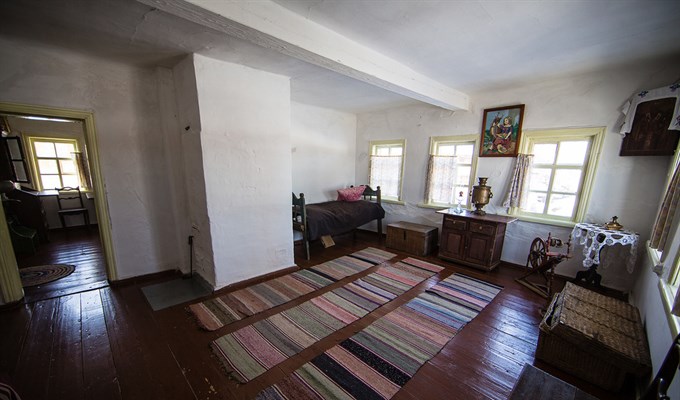
Bed and trunk of Stalin in Narym
But Stalin's house is not the only
thing that can be seen in Narym. There is a museum of local lore in the village
where it is possible to learn history of the village based in six years before
Tomsk, to get acquainted with "involuntary inhabitants" of Narym, and
also to see household items of Selkups – the people living in the territory of
Parabelsky district even before arrival of Russians.
Tourists get gastronomic surprise.
Imperial fish soup from three species of fish was served for lunch to the Tomsk
journalists in the museum.
Hunting a bear
Next day we went to the village
Podgornoye of Chainsky district. The third day of the travel is hard – the
fatigue from movement by bus affects. However, walk on ice of Ob gave necessary
loading to numb legs and back.
Podgoronoye is the regional center
of Chainsky district which main sights are the mountain Kulayka, which gave the
name to the kulayka archaeological culture (the 5th century BC – the 5th
century AD) known for the bronze cult casting.
"Welcome to the museum of
archaeological culture of the mountain Kulayka. We will get acquainted with
this culture in the exposition now, but you need to pass a clarification
ceremony before it: there is a birch bark from the mountain Kulayka, we will
kindle sacred fire with it help. This fire will clear you of bad energy",
– the employee of the museum Zinaida Reshetnikova welcomed guests.
© Евгений Кожевников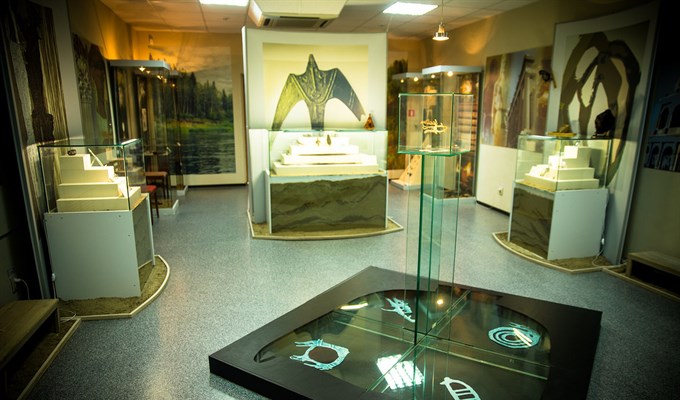
Kulayka exposition in the museum of local lore in Podgornoye
After all threw a piece of birch
bark into a bowl with fire, group of journalists were led to the museum where
the exposition devoted to culture of kulayets is located.
Further, everything was as in the
adventure movie: legends of the heavenly world the Kulayka deities, about the
world of dead, and "a ceremony on good luck" – a ritual prayer to
spirit of Elk, and after that we had a trip to Kulayka – "mountain of
spirits" as it is called by locals.
At the door of the mountain we heard
a bewitching drumbeat. Almost real Kulayka village is located on a glade at
Kulayka's bottom – there is a tent fitted by skins of animals and men in
national suits engaged in preparation of bows and arrows and women
manufacturing skins and cooking venison soup – lunch for tourists.
© Евгений Кожевников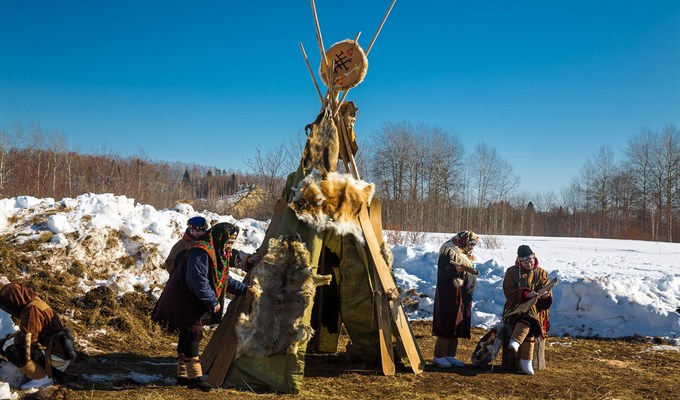
Kulayka village
Organizers didn't just recreate the
atmosphere. They offer a scene from kulaysky life: men get up from a fire with
weapon – hunting for a bear is begining now. "A bear was sent to the earth
by God the Father. It forgot about an order of the father and attacked people
because of hunger and midges. It became mortal and was forced to die that its
soul came back to the sky", – the guide explains the events.
Hunters leave and come back with a
skin – the animal is obtained. Now "kulayets" dance in frenzy under a
drumbeat that the bear to forgive them for their crime. We stand and look,
without closing a mouth. Something wild and attracting in these ritual dances
and ceremonial fight between men at the skin of the animal at the ancient
"mountain of spirits" is felt.
© Евгений Кожевников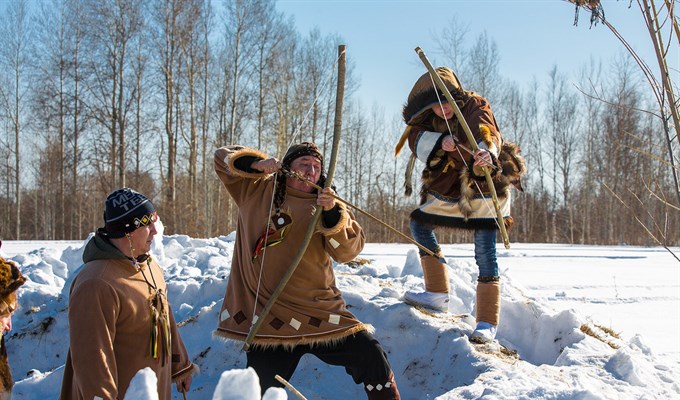
Kulayka bear hunting ceremony
After lunch it is time for us to
come back to Tomsk. We hardly stand on the feet, but we come back to Tomsk
rested.